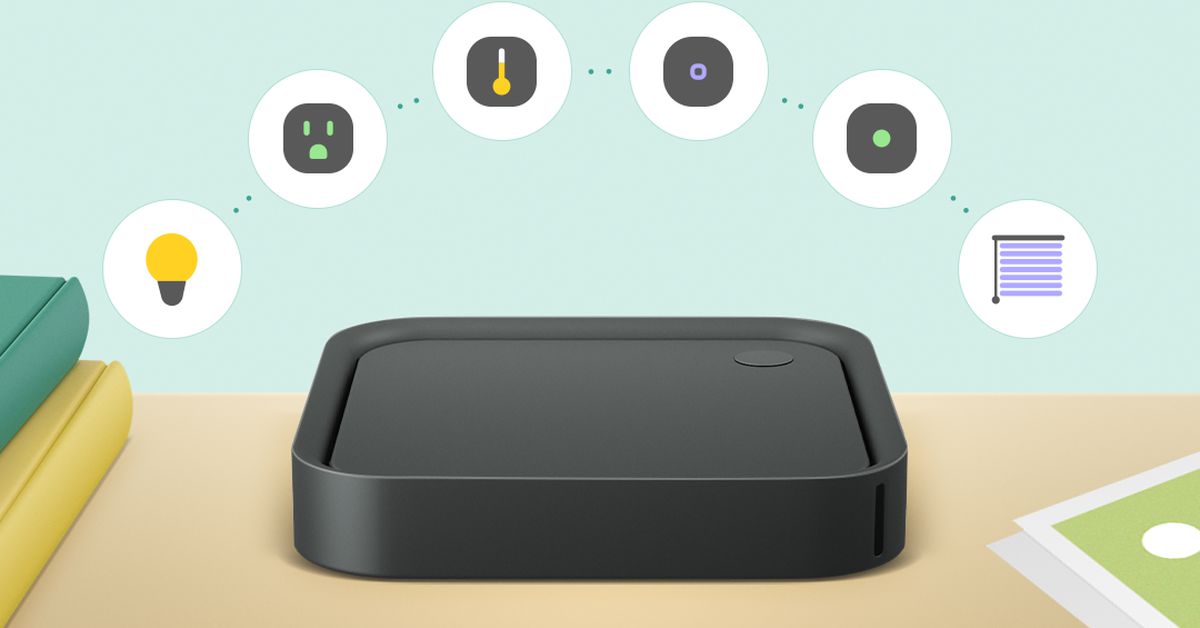Samsung SmartThings looks set to become the first major smart home platform to fully support Matter 1.2. According to a press release, the SmartThings platform now works with Matter 1.2, so manufacturers and developers can begin integrating their compatible devices with the platform. The SmartThings app won’t be updated to support Matter until later this summer — so you won’t be able to control your Matter-compatible Roborock robot vacuum or Midea dishwasher through SmartThings until then.
Samsung also announced several other updates to its smart home platform, including app design improvements, new device control options, a hub backup option, sharing routines and gamification of its SmartThings Energy feature.
Support for Matter 1.2 in SmartThings means that appliances added to the new smart home standard — jointly developed by Apple, Amazon, Google, Samsung and others — will now work with Samsung’s smart home platform.
This includes refrigerators, room air conditioners, dishwashers, washing machines, robot vacuums, smoke and carbon monoxide detectors, air quality sensors, air purifiers and fans. You’ll be able to add devices directly to the SmartThings app through Matter, control them, and receive notifications and alerts through the app.
The SmartThings platform already supports many of these appliances, both Samsung’s own brand and those from other manufacturers (including Thermador, Bosch and Dacor). But these are usually through cloud integrations.
Matter will bring these integrations local, which should mean faster response times and the ability to control devices even if your internet isn’t working. While Samsung’s connected appliances work with the SmartThings app, they are not certified by Matter. This means they only work with the SmartThings app, while Matter appliances can work with any smart home platform that Matter supports.
Amazon Alexa, Google Home, and Apple Home have not yet added support for Matter 1.2
However, the other major platforms, Amazon Alexa, Google Home, and Apple Home, have yet to add support for Matter 1.2. Apple has announced that it will support robot vacuum cleaners later this year, but there is no word on other types of devices. Home Assistant supports Matter 1.2, but its integration with Matter is still in beta. Although Matter 1.3 was announced in May, bringing support for energy management, microwaves, ovens, electric hobs, hoods and electric dryers, it’s unclear when we’ll see widespread support for the platform.
Currently, there are only a few Matter-certified appliances in the new supported categories — Roborock’s S8 MaxV Ultra, Ecovac’s Deebot X2 Combo vacuums, and AiDot’s air purifier are some examples. But now that one of the major platforms has announced support, I expect to see manufacturers enable it in their devices. Whirlpool (which owns KitchenAid and Maytag), Midea, LG and Haier (which owns GE Appliances) are notable brands that have said their products will support Matter.
Samsung has announced several other improvements for its platform besides the Matter update. Adds a new Hub Manager interface to the SmartThings app to provide a single place to manage multiple hubs. This adds an option to select a primary hub as well as a new hub backup feature. If you have multiple SmartThings hubs, a secondary hub can be activated if the primary hub fails.
SmartThings has expanded its hub infrastructure significantly in recent years, adding SmartThings hubs to its TVs, soundbars and smart refrigerators. With the Hub Backup feature, since you’re more likely to have multiple hubs in your home, if one shuts down, breaks or you replace it, your smart home will continue to work. Most of Samsung’s newer SmartThings hubs support Thread, Zigbee, and Matter, but only the Aeotec SmartThings hub also supports Z-Wave.
Samsung Galaxy smartphone users get a new quick access device control feature. You’ll now be able to choose devices to add to your own home control page in your phone’s quick panel for quick access to adjust the TV’s volume or change the brightness of the light without opening the SmartThings app.
Energy management is a key feature of a smart home, and SmartThings Energy, SmartThings’ energy management service, is one of the more robust options. Samsung is now adding a stylish gamification feature to the platform that lets you view and manage the energy usage of compatible appliances to help you save energy. When you use Samsung’s AI Energy Mode, which automatically adjusts the energy consumption of appliances, you can earn an Energy Stamp for every day you save 400Wh of electricity. These can be converted to Samsung Rewards and spent on Samsung products on Samsung.com.
The SmartThings app also gets some interface updates. The Devices tab will now display rooms as top-level tabs, making managing your devices by room easier. Device search has also been “enhanced” to help you find what you need faster. Devices will also have more prominent information on their card, including the device’s status – for example, a door lock will show whether it’s locked or unlocked.
You’ll also now be able to share with friends and family any routines or automation you create in the app. Shareable Routines will let you generate a QR code of a routine you’ve created for someone to scan to activate in the SmartThings app.
While these are mostly incremental improvements to the platform, they’re all welcome updates that — if they work as advertised — will make using SmartThings to control your smart home easier and more reliable. The platform is also leading the adoption of Matter, and while Matter is still far from the smooth, seamless smart home experience we were promised, SmartThings now offers one of the most robust implementations.



